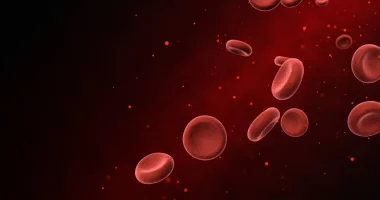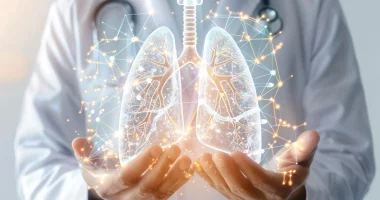Brill-Zinsser disease is a revival of epidemic typhus, a severe illness caused by the bacterium Rickettsia prowazekii. This condition happens in people who previously had epidemic typhus and have dormant bacteria in their bodies. When the immune system weakens, the bacteria can reactivate, leading to Brill-Zinsser disease. Unlike the initial infection, this reactivation typically presents with milder symptoms, including headache, rash, fever, and muscle pain. It is more common in older individuals and can be triggered by factors like illness or stress. Timely diagnosis and treatment with antibiotics, like doxycycline, are crucial to manage the disease and prevent complications.
Symptoms
Brill-Zinsser disease typically exists with milder symptoms compared to the initial bout of epidemic typhus. The most common symptoms include a sudden fever, often accompanied by chills and sweating. Patients may experience severe headaches, which can be persistent and debilitating. Muscle pain, particularly in the back and legs, is also common, along with general malaise and fatigue. These symptoms can be easily mistaken for other less severe illnesses, which can delay diagnosis and treatment.
In addition to these general symptoms, some patients may develop a rash, which is less common than in the initial epidemic typhus infection. The rash usually begins on the trunk and spreads to the limbs, but it may not always be present. Other symptoms can include a sick feeling of stomach, vomiting, and loss of appetite, contributing to weakness and weight loss. It’s important for people with a history of epidemic typhus to be aware of these symptoms, as early recognition and treatment with antibiotics like doxycycline are crucial for preventing serious complications.
Causes
- Reactivation of Rickettsia prowazekii: Dormant bacteria from a previous epidemic typhus infection become active again.
- Weakened Immune System: Conditions that compromise the immune system, like stress, aging, or other illnesses, can trigger reactivation.
- History of Epidemic Typhus: Individuals who have previously been infected with epidemic typhus are at chance of developing Brill-Zinsser disease.
- Poor Sanitary Conditions: Though less common, bad hygiene and living conditions that promote lice infestations can contribute to reactivation.
- Lack of Prior Treatment: Incomplete or inadequate treatment of the initial epidemic typhus infection may leave dormant bacteria that can reactivate later.
Treatment
Treatment for Brill-Zinsser disease mainly involves the use of antibiotics to eliminate the Rickettsia prowazekii bacteria. Doxycycline is the most frequently recommended antibiotic, as it is highly effective against rickettsial infections. In some cases, chloramphenicol may be used as an alternative, particularly for patients who cannot tolerate doxycycline. The course of antibiotics typically lasts for about 1 to 2 weeks, and early initiation of treatment is crucial to prevent complications and ensure a swift recovery. Supportive care, including hydration and fever management, can also help alleviate symptoms and enhance healing.
In addition to antibiotic therapy, monitoring and managing any underlying conditions that may have triggered the reactivation of the bacteria is important. For example, improving the overall health and immune function of the patient through stress management, proper nutrition, and treatment of concurrent illnesses can reduce the possibility of recurrence. Public health measures, like improving hygiene and controlling lice infestations in areas where epidemic typhus is prevalent, can also assist prevent the reactivation and spread of Brill-Zinsser disease. Early recognition and intervention are key to effectively managing this condition and preventing severe outcomes.
Diagnosis
Diagnosing Brill-Zinsser disease includes a combination of laboratory testing and clinical evaluation. Initially, healthcare providers will review the patient’s medical history, especially focusing on any past episodes of epidemic typhus, as well as current symptoms like rash, fever, muscle pain, and headache. This historical context, combined with presenting symptoms, can raise suspicion of Brill-Zinsser disease, particularly in patients who have risk factors like weakened immune systems.
Laboratory tests are essential for confirming the diagnosis. Blood tests can detect antibodies against Rickettsia prowazekii, indicating a reactivation of the infection. Polymerase chain reaction tests can identify the bacterial DNA in blood samples, providing a definitive diagnosis. Additionally, a skin biopsy of the rash, if present, can be analyzed for the presence of rickettsial organisms. Prompt and accurate diagnosis is crucial, as it allows for the timely initiation of antibiotic treatment, which is vital for preventing complications and promoting recovery.
Prevention
Preventing Brill-Zinsser disease mainly involves strategies aimed at preventing the initial epidemic typhus infection, as Brill-Zinsser disease is a revival of this infection. Here are key preventive measures:
- Vector Control: Epidemic typhus is transmitted by body lice. Controlling lice infestations through proper hygiene practices, regular bathing, and laundering clothes and bedding can decrease the chance of initial infection.
- Improving Living Conditions: Promoting clean and sanitary living conditions, especially in impoverished or overcrowded areas where lice infestations are more likely, can help prevent the spread of epidemic typhus.
- Personal Hygiene: Practicing good personal hygiene, including regular bathing and changing clothes, can reduce the chance of lice infestation and subsequent infection.
- Public Health Measures: Implementing public health interventions like education about epidemic typhus, early detection of outbreaks, and timely treatment of infected individuals can help prevent the spread of the disease within communities.
- Vaccination (where available): In regions where epidemic typhus is endemic or outbreaks happen, vaccination programs may be implemented to protect high-risk populations, like healthcare workers and individuals living in endemic areas.
- Health Education: Educating individuals about the symptoms and signs of epidemic typhus, as well as preventive measures, can empower them to seek early medical attention and take appropriate precautions to avoid infection.
By aiming at these preventive measures, communities can reduce the incidence of epidemic typhus and subsequently lower the chance of Brill-Zinsser disease reactivation in individuals who have previously been infected.
Summary
Brill-Zinsser disease is a revival of epidemic typhus caused by Rickettsia prowazekii, triggered when dormant bacteria become active due to weakened immunity or other stressors. Symptoms include fever, rash, headache, and muscle pain, often milder than the initial infection. Diagnosis involves a history review, clinical evaluation, and laboratory tests like antibody detection and PCR. Treatment with antibiotics like doxycycline is effective if initiated promptly. Prevention focuses on controlling body lice, improving hygiene, and implementing public health measures. Education about symptoms and hygiene practices is crucial for early detection and prevention.









